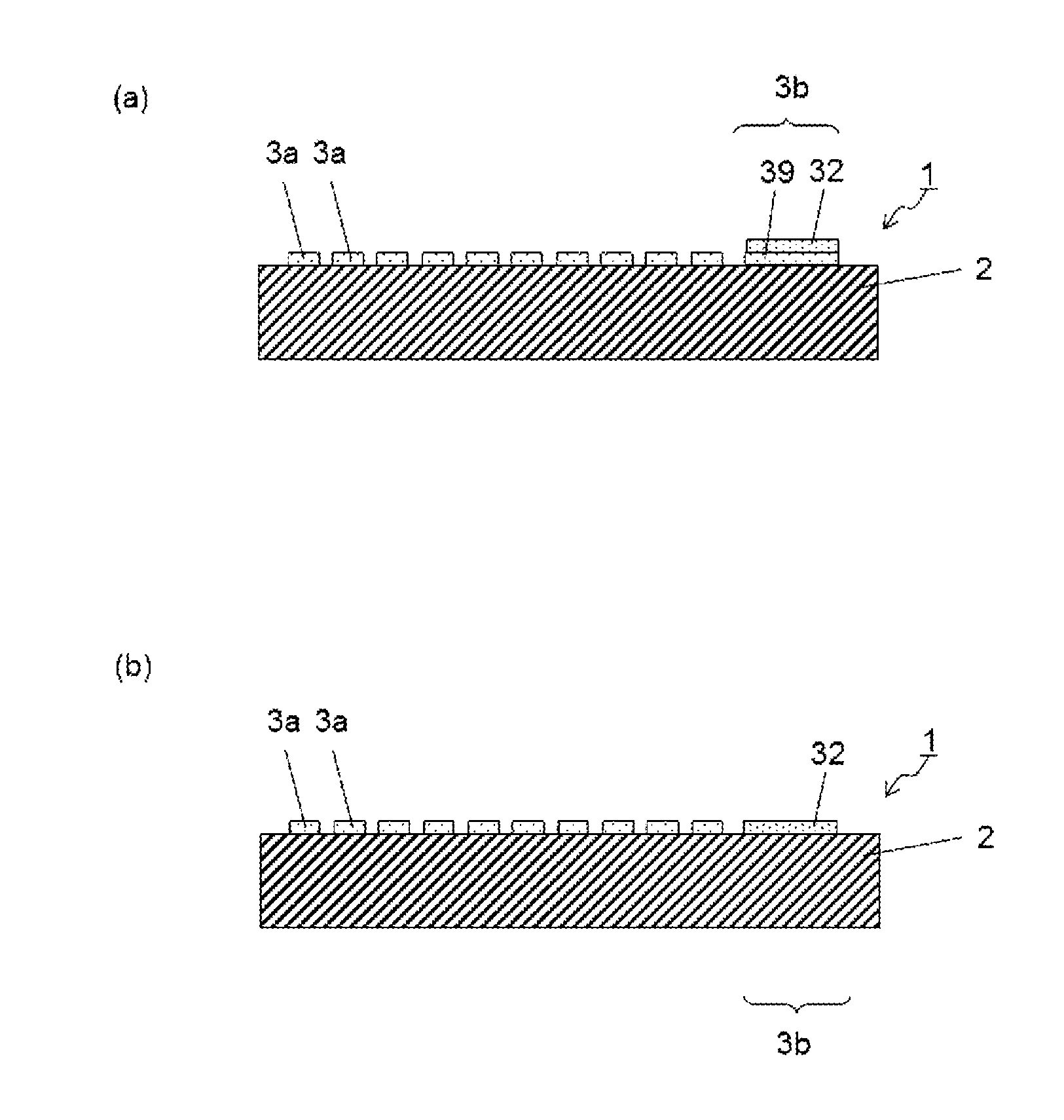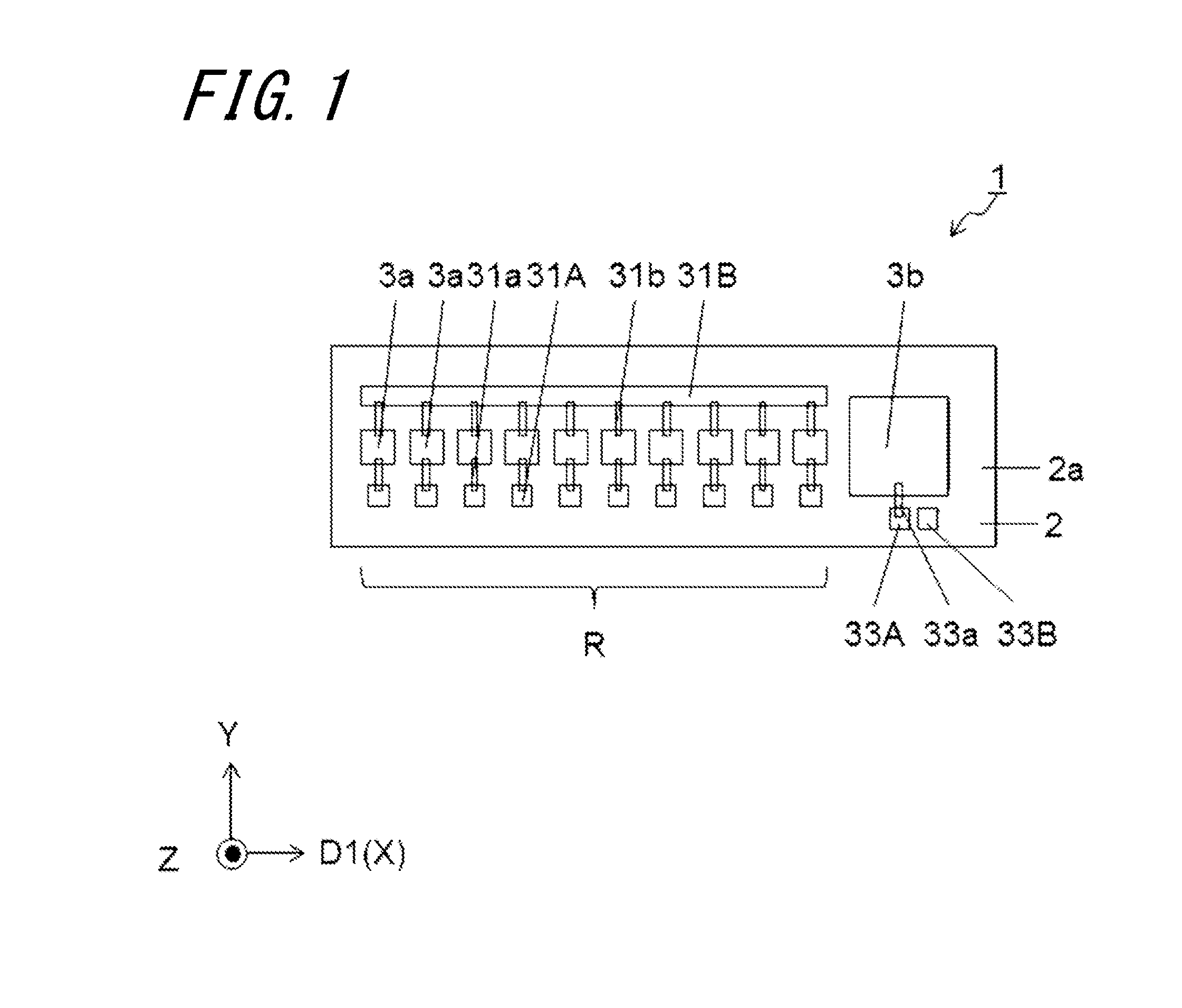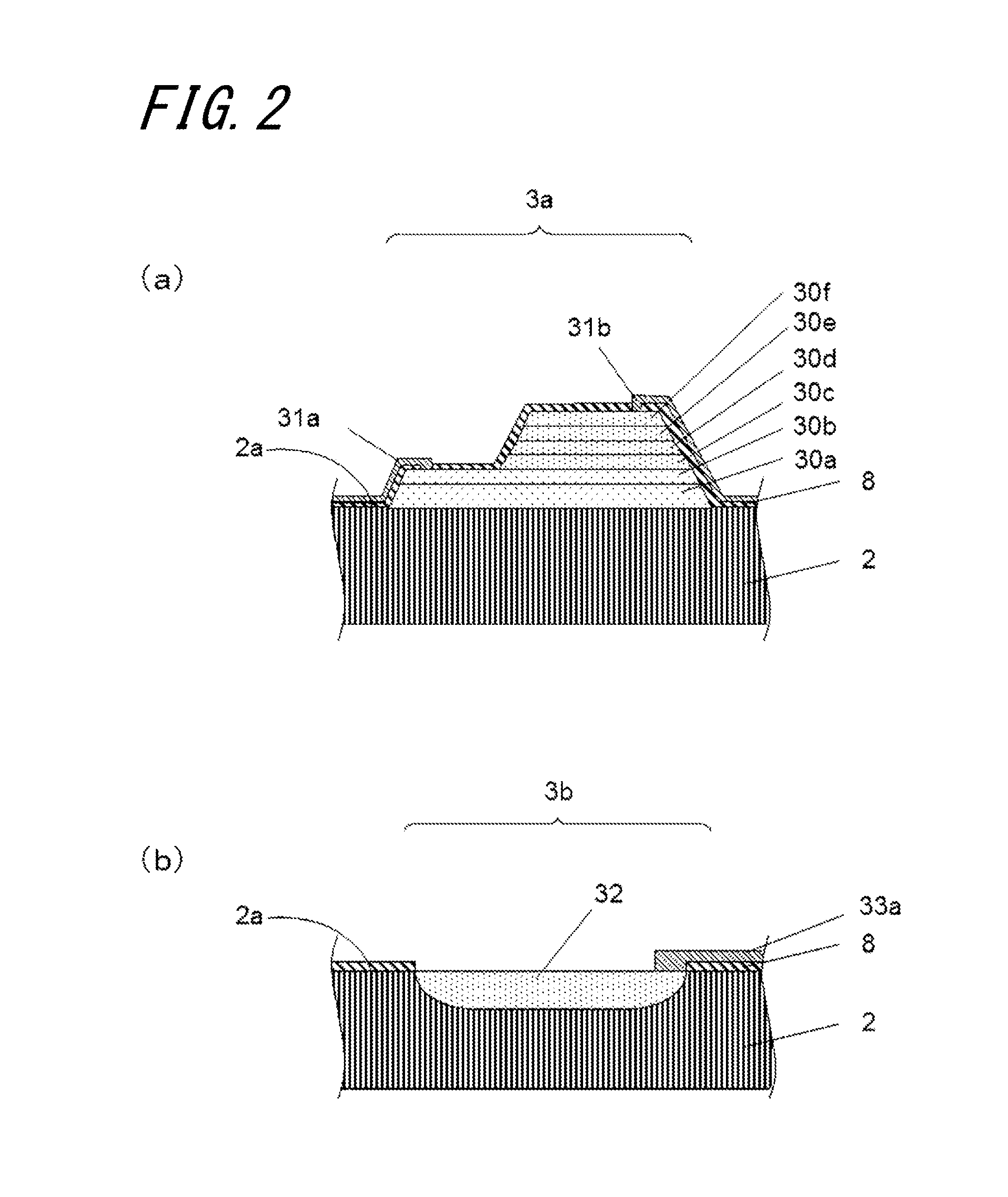Light receiving/emitting element and sensor device using same
- Summary
- Abstract
- Description
- Claims
- Application Information
AI Technical Summary
Benefits of technology
Problems solved by technology
Method used
Image
Examples
example 1
[0094]By using, as a base model, the light receiving / emitting element 1 illustrated in FIG. 1, changes in quantities of the lights received by the first light receiving element 3b were checked by simulation, as detailed below, when the distance to the irradiation target was changed. In the light receiving / emitting element 1, eight light emitting elements 3a were arrayed and successively denoted by 3a1, 3a2, . . . , 3a8 in order starting from the side closest to the first light receiving element 3b. Furthermore, the first direction was defined as an X-direction, and an XY plane parallel to a principal surface of the substrate 2 was defined by the X-direction and a Y-direction perpendicular to the X-direction. A direction normal to the XY plane was defined as a Z-direction.
[0095]First, in the light receiving / emitting element 1, relative positions of the individual light emitting elements 3a and the first light receiving element 3b were determined corresponding to distances (reference ...
PUM
 Login to View More
Login to View More Abstract
Description
Claims
Application Information
 Login to View More
Login to View More - R&D
- Intellectual Property
- Life Sciences
- Materials
- Tech Scout
- Unparalleled Data Quality
- Higher Quality Content
- 60% Fewer Hallucinations
Browse by: Latest US Patents, China's latest patents, Technical Efficacy Thesaurus, Application Domain, Technology Topic, Popular Technical Reports.
© 2025 PatSnap. All rights reserved.Legal|Privacy policy|Modern Slavery Act Transparency Statement|Sitemap|About US| Contact US: help@patsnap.com



